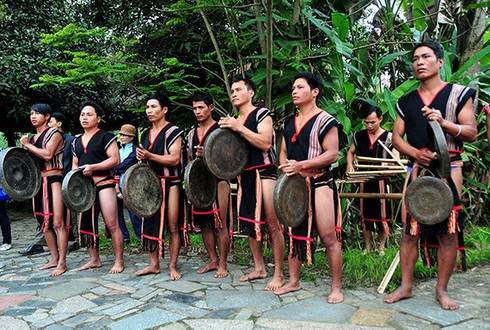The villagers thank the Jade Emperor and genies and pray to them to be blessed with a bumper crop, full stock of rice and maize, productive animals, prosperity, and happiness.
The New Rice celebration takes place over two or three days with many worship rituals and festive activities. From a family ritual in the past, the celebration has now become a community event.
A week before the celebration the patriarch gathers all the villagers to inform them of the schedule and assignments for each family.
The women will prepare rice, water, and vegetables while the men collect wood, hunt animals, and repair the Rong communal house.
The patriarch hosts the ritual and represents the villagers in thanking the genies for giving them a good crop.
Luong Thanh Son, a researcher of Central Highlands culture, said, “The New Rice celebration is held after the harvest at the beginning of the year. Whether it’s a bumper crop or a poor crop, they organize the ceremony to thank the genies and pray to them for another abundant harvest.”
Every family contributes to the community celebration its best alcohol, rice in bamboo tubes, and roasted pork. The patriarch invites the genies to enjoy the offerings.
Researcher Son said, “The offering must include rat meat. Everyone eats rat meat in the hope that rats will not destroy the crop.”
The patriarch informs the genies of the year’s production, yields, and offerings and prays to them to protect the plants and animals from wild beasts and natural disasters.
After the ritual, all the villagers gather in the Rong House to eat, drink, sing, and dance together to gongs and other musical instruments.
Patriarch A Khao of Dak Ang commune in Kon Tum province said, “Villages organize the rituals and perform gong music and community events. Neighbors help each other prepare the offerings and feasts. All villagers, young and old, gather at the communal house for the celebration.”
After the ritual at the communal house, the patriarch and villagers go from house to house to wish the owners a good yield. They throw rice around the house as a symbol of abundance and fertility.
The festival fortifies their belief and inspires them to work harder for prosperity and wealth.




